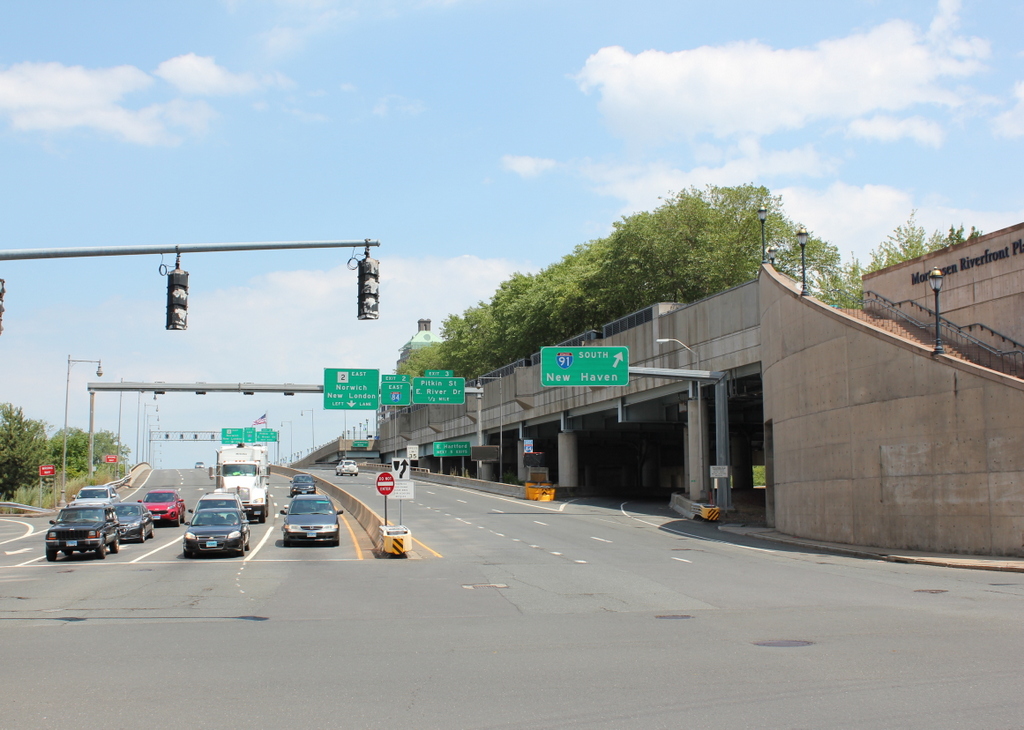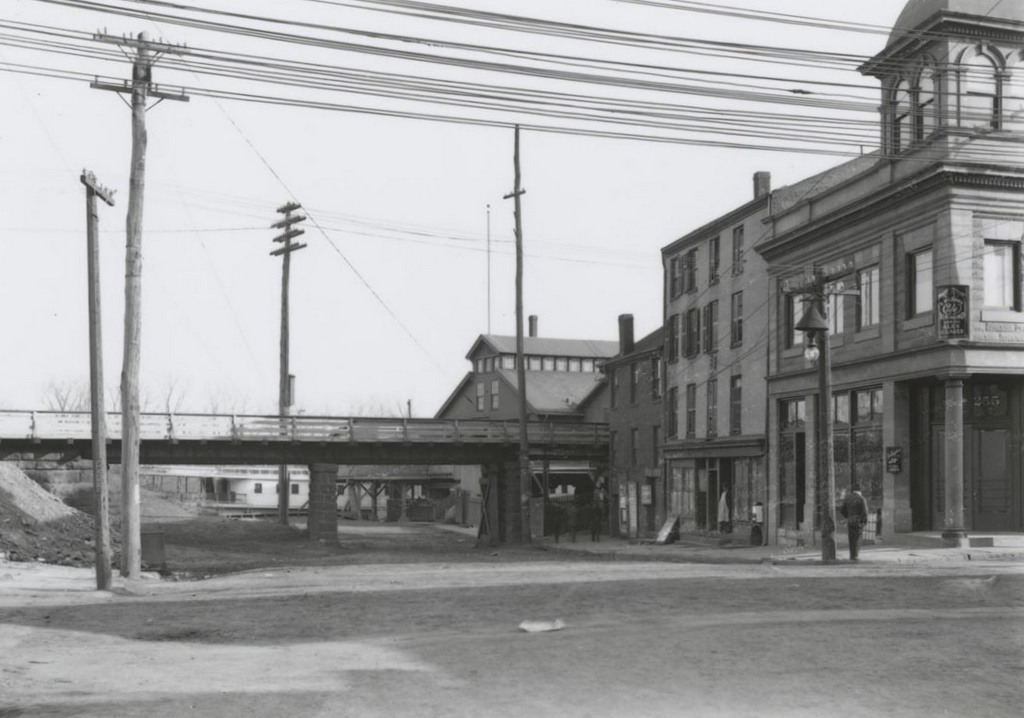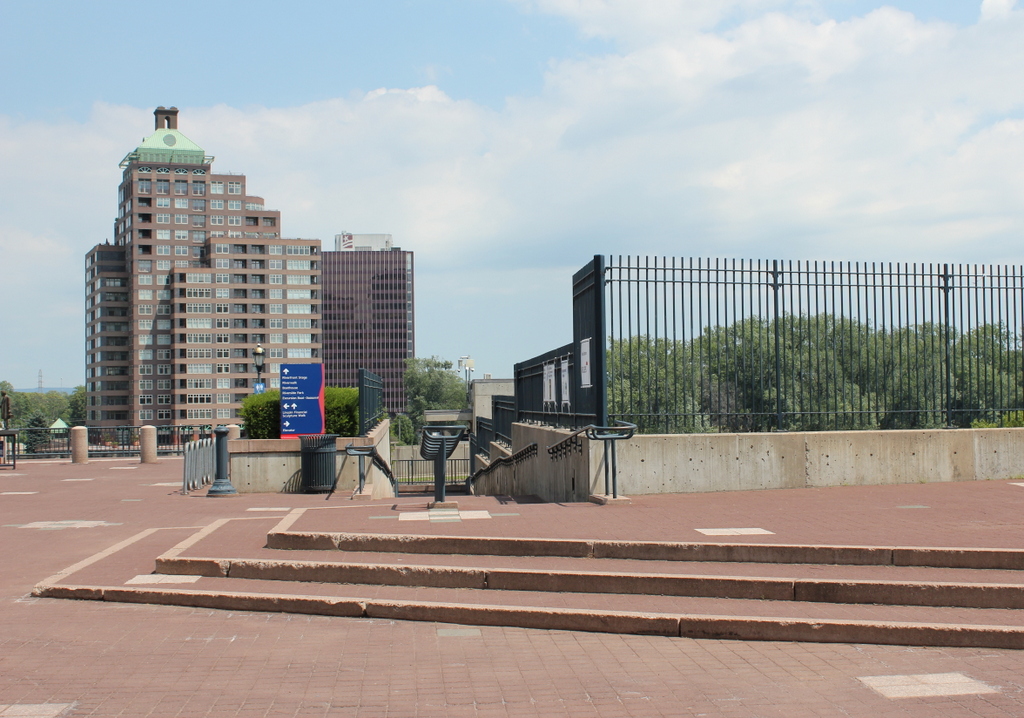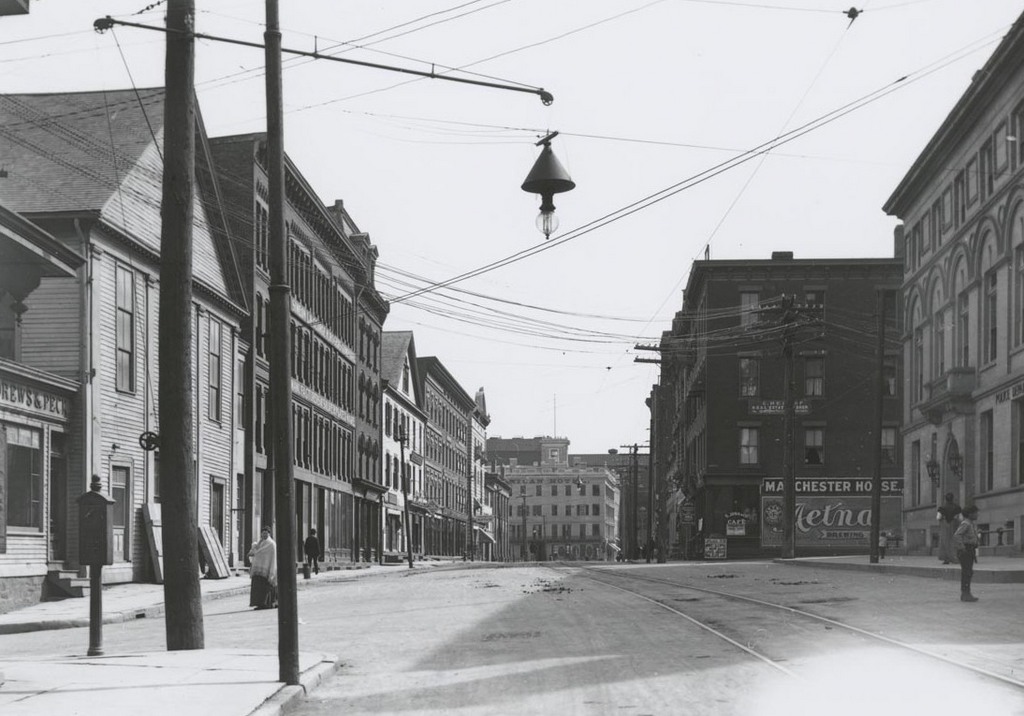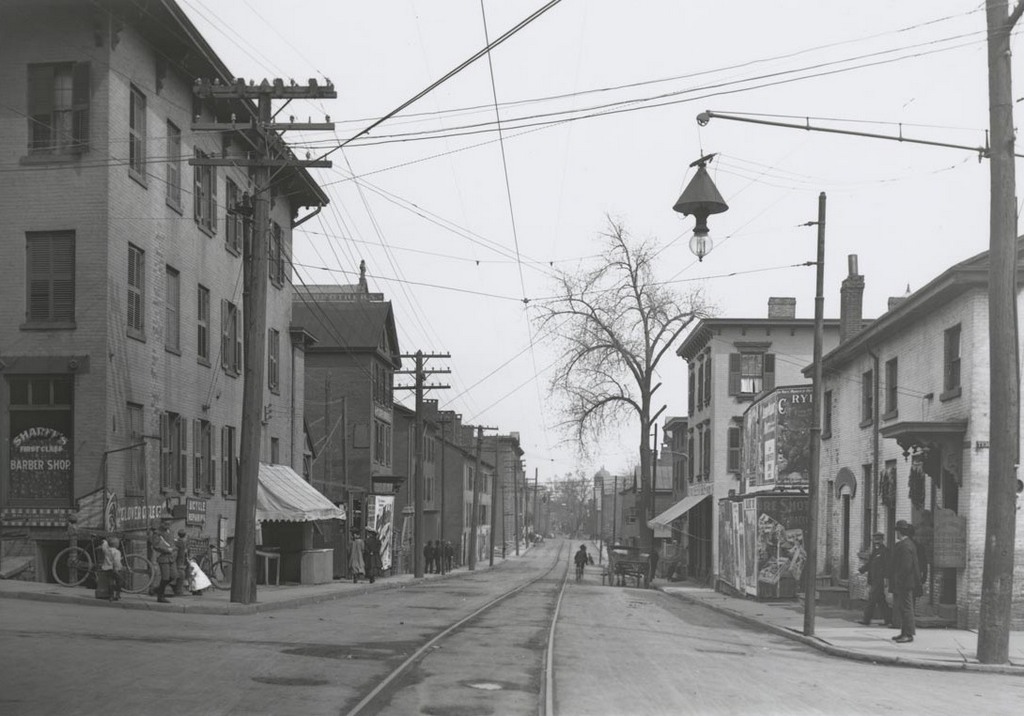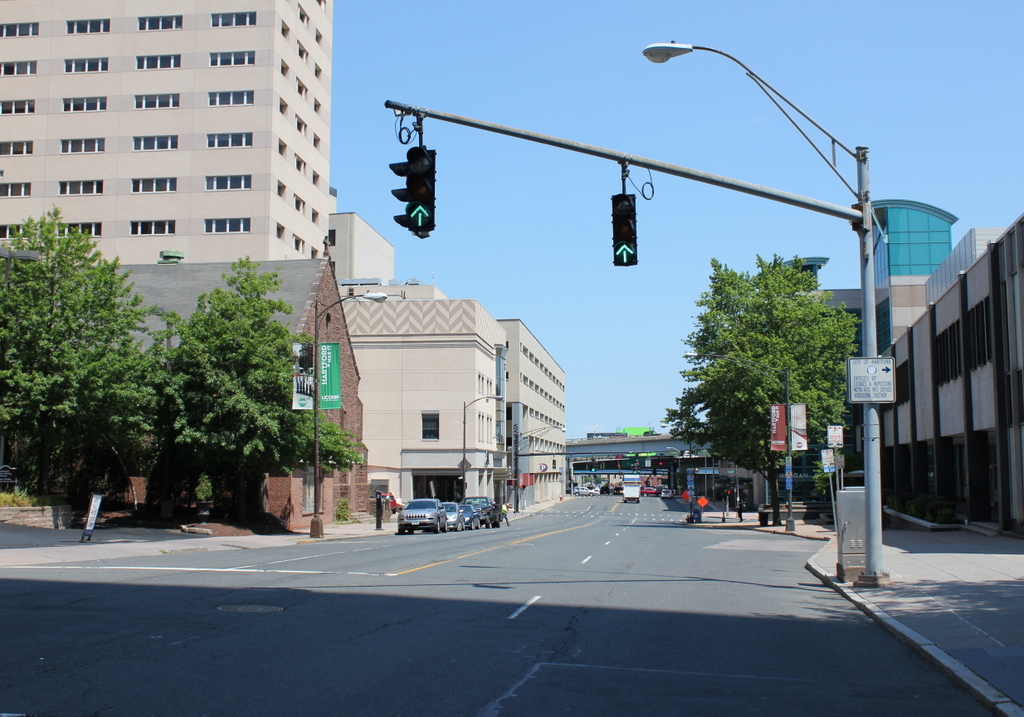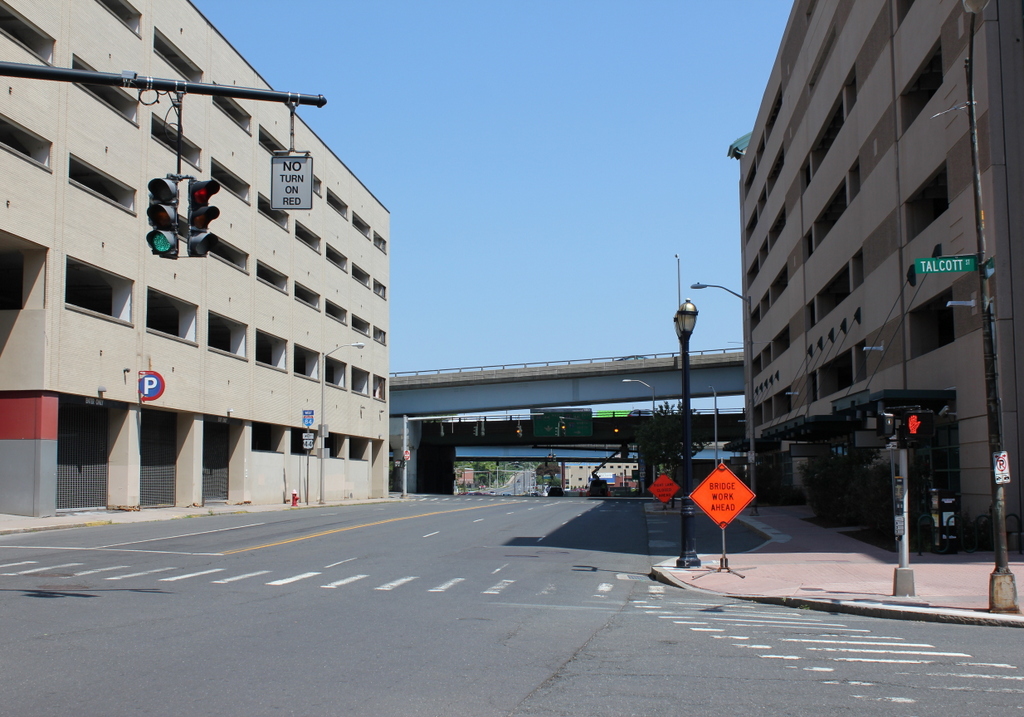Looking east on Ferry Street from Front Street (now Columbus Boulevard) around 1903-1906. Image courtesy of the Connecticut State Library.
The scene in 2016:
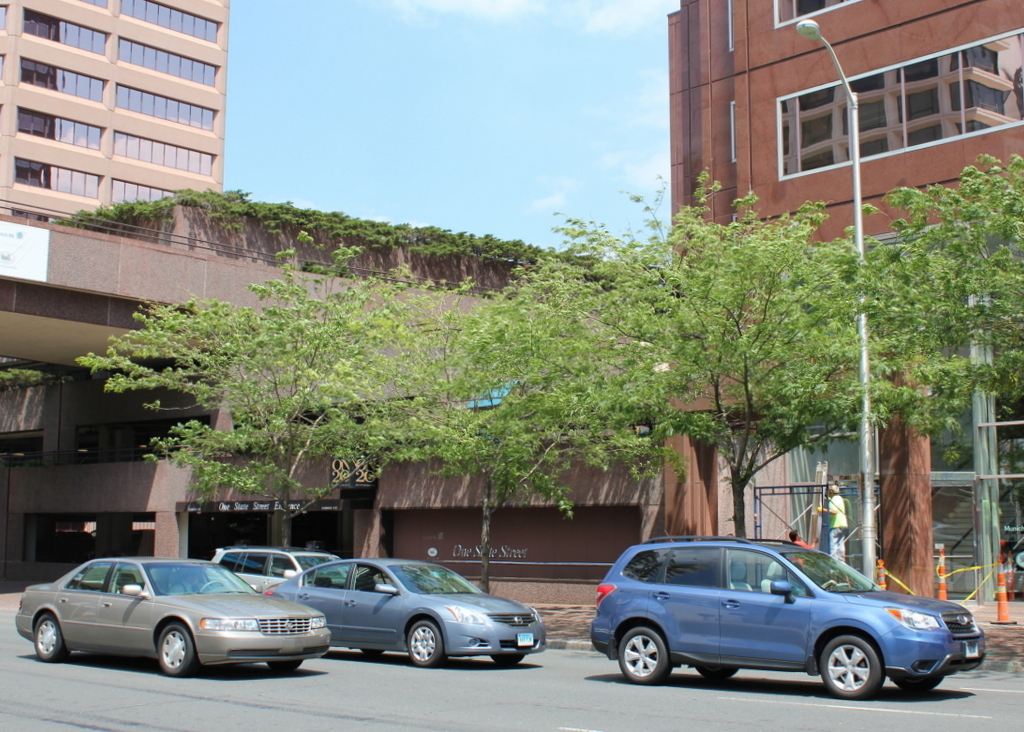
As the present-day scene shows, Ferry Street no longer exists, but it once extended east from Front Street to Commerce Street, at the banks of the Connecticut River. Because of its proximity to the Connecticut River and the railroad tracks, this section of Hartford was largely industrial. There were some tenement houses on this street, but in the days before zoning laws they were interspersed between stables, storehouses, foundries, and related businesses. The most visible of these from the first photo is the building on the left, which according to the sign was a “carriage and wagon factory,” with “horseshoeing and general blacksmith” work done here as well.
Unfortunately for whoever owned that business, carriage and wagon making, horseshoeing, and blacksmith work were all on their way to becoming obsolete by the time the photo was taken. Many of these buildings were probably damaged or destroyed some 25 years later during several floods in the 1930s, which caused considerable damage in this neighborhood and furthering its decline. Many of the older buildings in the first photo were probably gone by the 1950s, but any that were left would have been demolished in the Constitution Plaza urban renewal project, which was completed in the 1960s. The entire neighborhood was leveled and rebuilt, and some streets, such as Ferry Street, were completely eliminated in the process. Today, the One State Street office building is located where Ferry Street used to be.



